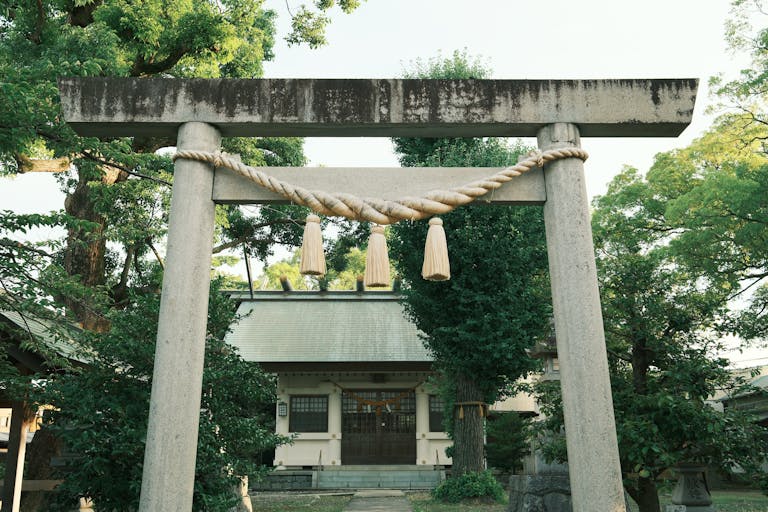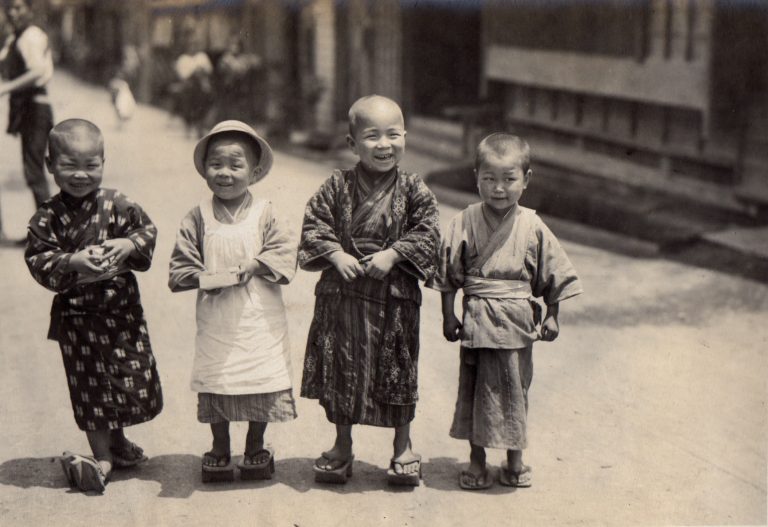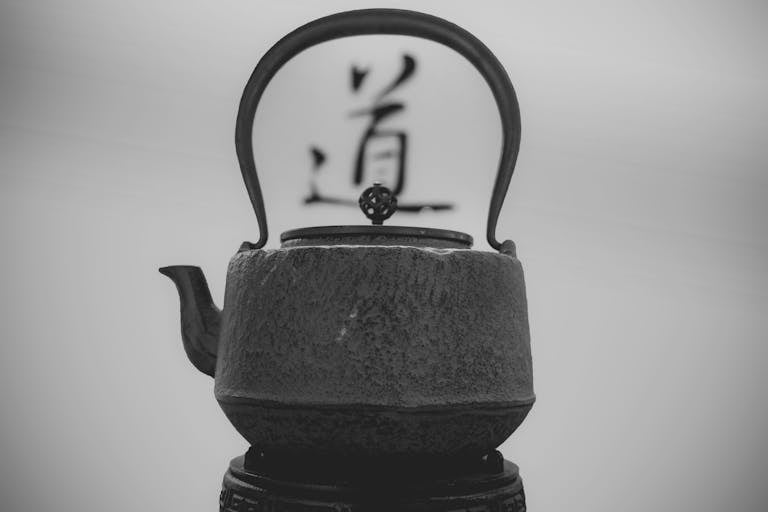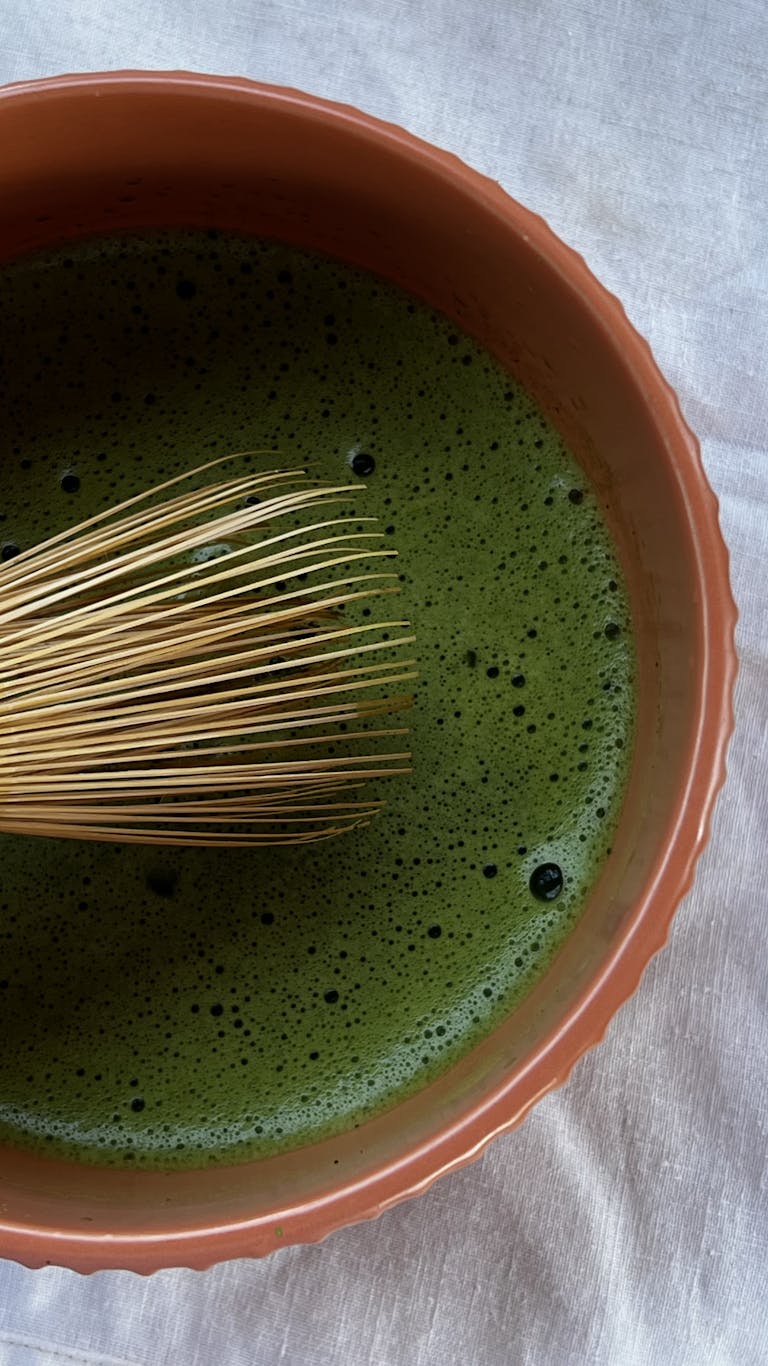Hi Fu Mi: Primordial Sounds of the Cosmos

Introduction
For the last 20 years since I left Japan, I have almost exclusively used English to think and communicate. I was not educated on the importance and significance of my native language, Japanese then, and I have written about how it was engineered to be that way postwar in this post. I despised my own country and culture at the time, so It was more important for me to learn to speak English; I completely abandoned Japanese and I dove deep into American culture. Reflecting today, I don’t necessarily regret it—now I get to connect and communicate with many wonderful humans in the world outside Japan thanks to me learning to use the English language. Also, healing the part of myself that despised and abandoned Japanese culture helped me to reclaim and remember the great significance and power of it. Now I get to use both. The memories deep in my DNA will never go away no matter what indoctrinations would be done to me. Remembrance will always be there, especially when it’s awakened by the vibration of primordial sounds of the native language.
In this post, I want to explore the ancient Japanese concepts of language, sounds and their powers. It is said and believed mainstream that the Japanese language dates back to about 400 BC, but something tells me that it’s not the case. Ancient Jyōmon period in Japan between 14,000 BC and 300 BC already had the primordial spoken Japanese language, which could be hard to define because most are orally transmitted. Actually, there are multiple Jindai Moji (神代文字, ancient characters) found in Japanese history, even though existence of these ancient characters are mysteriously denied in modern mainstream Japanese academia. So this will be a very interesting deep dive into origin of the Japanese language through one of the oldest known prayer called Hifumi norito (祝詞, prayer, mantra, offering). Are you ready? Let’s get rambling!

Kotodama 言霊: The Spirit of Sound
Since ancient times in the Jyōmon period (14,500-300 BCE), it seems that Japanese people have always had a concept of kotodama, a spiritual power inherent in words and sounds. Each letter and syllable is not just a unit of the language but a living entity with its own soul, consciousness, force and vibration that come from the sound. Words were considered sacred and living entities that carry primordial essences, and this is known as kotodama. Though this concept is not as significant in modern Japan as the ancient times—through history of westernization, oppression, and erasure of the culture and language by postwar GHQ, and educational systems etc, it is still a common concept and basic belief within Japanese society that our words have some kind of spiritual force and significance.
Norito 祝詞: The Sacred Songs
Norito (祝詞, mantras) are known as prayers used in Shinto religious practices, expressing praise for the deities, listing offerings, and making petitions in modern times. However, their origin goes even further back to the prehistoric ancient times in Japan; ancient shinto embodying animism and cosmic connectedness blossomed in the Jyōmon era, and Norito were the sacred offering songs to the cosmos showing love and gratitude from the people. Here I will introduce you to one of the oldest Norito in existence, Hifumi Norito (ひふみ祝詞).
Hifumi Norito first appeared in an official historical chronicle Sendai Kuji Honki (先代旧事本紀) put together by Prince Shōtoku in 622 C.E. This is a book that gathered all of ancient Japanese knowledge on science, history, medicine, astrology, philosophy, ethics, etc. up to that point in one place, and was quite evolutionary at the time. Therefore one can observe that Hifumi Norito is at least 1400 years old, but many evidences suggest that it is much much older, even as old as the Jyōmon period over 10,000 years ago—a time of profound spiritual connection with nature and the unseen world, and also said to be the longest lasting period of peace and harmony in all human history. Hifumi consists of the 47 basic Japanese letters and sounds. It has an anagram structure where every single letter and sound of the set of basic letters are used only once in the entire song, creating a profound story from the unique vibration and essence of each sound. There are multiple other Japanese songs made the same way traditionally. Hifumi Norito is a simple yet one of the most powerful prayers or mantras in the language. With that, there might be a possibility that Hifumi Norito was intentionally hidden away from people by authorities throughout history as it is not widely known to modern Japanese people. Thanks to few individuals and old shinto shrines that protected, revered and kept the daily offerings of Hifumi Norito, the oral transfer of this prayer has been preserved quietly underneath the authoritative regulation. It has caught attention recently in the last few decades in Japan as a miraculous Norito because it appeared in Hituki Shinji (日月神事, Sun Moon Godly Revelation), a book channeled and written through a Japanese painter Tenmei Okamoto right before the end of the World War 2. I will write about this extremely profound and intriguing book some day. But for now let’s get deep into the actual prayer Hifumi Norito.
Full Text of Hifumi Norito ひふみ祝詞
Let’s first see what this mysterious Japanese mantra looks like.
ひ(hi) ふ(fu) み(mi)
よ(yo) い(i) む(mu) な(na) や(ya)
こ(ko) と(to) も(mo) ち(chi) ろ(ro) ら(ra) ね(ne)
し(shi) き(ki) る(ru)
ゆ(yu) ゐ(wi) つ(tsu) わ(wa) ぬ(nu)
そ(so) を(wo) た(ta) は(ha) く(ku) め(me) か(ka)
う(u) お(o) え(e)
に(ni) さ(sa) り(ri) へ(he) て(te)
の(no) ま(ma) す(su) あ(a) せ(se) ゑ(we)
ほ(ho) れ(re) け(ke)
There’s no consonant sound that perfectly matches R and L. Where it is written with R, the sound is something between R and L.
There are multiple ways to interpret this ancient prayer, as each letter, with Japanese being an ideographic language, contains multiple meanings, things and vibrations. For example, the first 15 letters of Hifumi Norito each has meanings and interpretations shown below:
ひ(hi): 1 one, Sun, Light, Fire, The Beginning
ふ(fu): 2 two, Air, Particle, Vibration, Propagation
み(mi): 3 three, Water, Density, Molecule, Materialization, Structure
よ(yo): 4 four, World, Earth, Material World
い(i): 5 five, Life, Birth, Emergence of Primitive Life
む(mu): 6 six, Bugs
な(na): 7 seven, Fish
や(ya): 8 eight, Birds
こ(ko): 9 nine, Animals
と(to): 10 ten, Humans
も(mo): 百, hundred
ち(chi): 千, thousand
ろ(ro): 万, ten thousand
ら(ra): 億, one hundred million
ね(ne): 兆, trillion
As you can see, there are multiple interpretations for each letter and therefore there are multiple ways that Hifumi Norito can be interpreted. So let’s go over a few of them.

Interpretation 1: The Love Song to the Cosmos
I personally love this version as the prayer is universal and I find it very effortless to feel the meaning as I speak each sound.
ひ(hi) ふ(fu) み(mi) よ(yo) い(i) む(mu) な(na) や(ya)こ(ko) と(to) も(mo) ち(chi) ろ(ro) ら(ra) ね(ne)
All beings and everything in Nature are born into existence and alive thanks to the great blessings of the Universe. We give our gratitude to Gods of the Sun and the Moon and their benevolence for our lives every single day.
し(shi) き(ki) る(ru) ゆ(yu) ゐ(wi) つ(tsu) わ(wa) ぬ(nu) そ(so) を(wo) た(ta) は(ha) く(ku) め(me) か(ka)
The Gods of the Sun and the Moon continuously restore us from sickness and aging, and protect us from the evil forces.
う(u) お(o) え(e) に(ni) さ(sa) り(ri) へ(he) て(te) の(no) ま(ma) す(su) あ(a) せ(se) ゑ(we) ほ(ho) れ(re) け(ke)
Harvest from our fields and fish from the ocean are bountiful and abundant; we are all able to work and live joyfully and peacefully. We begin our work in the morning, break our sweat with the light of the sun, and return home in the evening, where great harmony further prosper our offsprings for generations to come. We thank and pray for the Gods of the Sun and the Moon with our deep reverence and love.

Interpretation 2: The Hemp Cultivation Song
In his book Healing Hemp Poems and Truth, Yasunao Nakayama a Japanese hemp grower and an avid researcher interprets Hifumi Norito as a message from our ancestors to praise and revere hemp cultivation. As I wrote in this post, hemp cultivation was a part of everyday life in Japan and all over the world because of the plant’s life-giving properties until postwar GHQ banned it in Japan.
ひ(hi) ふ(fu) み(mi) よ(yo) い(i) む(mu) な(na) や(ya) こ(ko) と(to) も(mo) ち(chi) ろ(ro)
One, two, three, four, five, six, seven, eight, nine, ten, hundred, thousand, ten thousand times, again and again,
ら(ra) ね(ne) し(shi) き(ki) る(ru) ゆ(yu) ゐ(wi)
Sow the seeds of hemp, and everything will be tied to the Gods as the strong fiber.
つ(tsu) わ(wa) ぬ(nu) そ(so) を(wo) た(ta) は(ha) く(ku) め(me)
Grow lots of hemp plants which possess a great life force;
か(ka)う(u) お(o) え(e) に(ni) さ(sa) り(ri)
They will keep away any evil forces.
て(te) の(no) ま(ma) す(su) あ(a) せ(se) ゑ(we) ほ(ho) れ(re) け(ke)
Cultivate and steward the God-given fields with much sweat and love, and life will continue for generations.

Interpretation 3: The Cave Opening (Soul Discovering) Song
This one is a little bit mind-blowing. Joseph Eidleberg, an Israeli author and cultural researcher who focused on the two great mysteries in Jewish history: the Exodus and Ten Lost Tribes of Israel, was also a supporter of Japanese-Jewish common ancestry theory which claims ancient Japanese people to be the majority of the ten lost tribes of Israel. Mister Eidleberg in his book The Japanese and the Ten Lost Tribes of Israel interpreted Hifumi Norito by writing the sounds in Hebrew as follows:
Hi fu mi yo i mu na ya ko to
היפה מי יוציאה מה נענה יקחנה תב
(Hebrew language is written from right to left)
Which is pronounced as:
Hifa mi yotzia ma naane ykakhena tavo
And can be translated to mean “who would bring out that beautiful Goddess; what words can be spoken to the Goddess in order for her to come out?” This might sound like a bunch of meaningless words for those of you unfamiliar with Japanese mythology, but anyone who knows the story can immediately recognize the scene. This is a dramatic scene in the story of Japanese Sun Goddess Amaterasu as she hid herself in a rock cave, Amano Iwato because of her unruly brother Susanō’s violent behaviors. The world without the Sun Goddess grew dark and cold and other Gods are trying to get Ameterasu, “the beautiful goddess” as interpreted in the Hebrew translation of the prayer, out of the cave, and it is considered that Hifumi Norito was the prayer presented in order to bring out Amaterasu. There is also another interpretation of this mythology in Japanese mythology that what is actually inside the rock cave is the true self or a soul of each person, and to open the rock cave door, Amano Iwato, is to get to know the true self, the God self, and praying with Hifumi Norito is considered to be effective in this path of the True self knowledge and the cleansing of the self in order to be able to reach the soul.
There are few other variations for the interpretation of Hifumi Norito. I feel that all three interpretations above are absolutely complimentary with each other and I would imagine others are the same way. I find this very interesting because whichever interpretation that one chooses, the sound created by the sequence of these basic japanese letters seems to invoke one common theme: A story of the Universe related to you. I feel that Hifumi Norito is a great daily prayer and a song offering to show our gratitude to Mother Earth, the Universe and all life, whichever interpretation we choose. I personally have been chanting it with the meaning number 1 facing the morning sun in the east, and usually many birds come to perch on the nearby tree.

Effects to Expect from Chanting Hifumi Norito
There are a few effects that people have experienced repeatedly through chanting Hifumi Norito. These are pretty impressive and might sound woo-woo to some of you; as I was researching I found out that Japanese people who express these effects and results don’t really seem to be surprised about it. It is like they almost expect it unconsciously. It might be our cellular memories getting activated through the sounds, or offering of the prayer this way is just natural to Japanese people. Here’s a list of some of the effects of chanting Hifumi Norito that many sources reported.
Effect 1: Cleansing of Body, Mind, Soul, and the Space
A few shrines in Japan call Hifumi Norito Harae Kotoba (祓詞, purification prayer) and priests in those shrines offer Hifumi as a part of the purification ritual every morning. As such, Hifumi Norito is reported to have extreme cleansing and purifying effects on our bodies, minds, souls, and the spaces that we offer it in. This is wonderful as the modern-day collective consciousness and airwaves are often filled with emotional signatures like fear, worry, sadness, rage, envy, etc. which are the lower end of the vibrational frequencies. The cleansing effect of Hifumi Norito is a great support in your daily integrative spiritual work, as it helps you to appreciate what is and what is there instead of what is not.
Effect 2: Increasing the Feeling of Gratitude
We all know that the feeling of gratitude is wonderful. It is amazing to feel, to offer to people and to receive from others. If that is not enough for you, the numerous benefits of gratitude are scientifically proven—improved physical health, mental resilience, self-esteem, relationships, sleep and more . This is where Hifumi Norito shines. Chanting it helps us to naturally increase the feeling of gratitude and also it vibrates out to our immediate environment and Nature around us. It seems that the vibration of these sounds are quite ancient and universal, and I intuitively feel that it doesn’t really matter what your ethnic lineage is and what language you speak. Honestly, even most Japanese don’t necessarily make out the meaning of Hifumi Norito words. It is more in the sound vibration of the prayer. When I sing Hifumi Norito outside, I usually have a feeling of gratitude for my life, and all the life around me. Then as if the Nature is giving a response, I can feel a sudden soft breeze touching my hair or butterflies flatter around and I feel an appreciation from the Nature.
Effect 3: Ego shrinks and True Self or Higher Self Becomes Prominent
In Japanese, the True or the God self is called Jinga (神我 or 真我, God Self, True Self). It is very telling that this word can be spelled two different ways: one with the letter 神, God, and the other with 真, the Truth. It is implied that our true authentic nature is also the divine nature. Chanting of Hifumi Norito will help us connect to our True Selves which is our highest expression of the God Selves, melting away the Ego consciousness of “me me me” and instead instilling the feeling of “we as one”, the Universal or Cosmic consciousness. I am not saying that chanting Hifumi Norito will enlighten us all; that sounds like some extreme religion or cults out there. You can consider this third effect of Hifumi Norito as a tuning yourself into your authentic self, a gateway for the higher consciousness. This is shown in the interpretation number 1 as the opening of Hifumi Norito sings the birth of All Life thanks to the blessing of the Universe. We are included as part of that All Life. Isn’t it wonderful?
Effect 4: Relaxation through Balancing the Nervous System
Our wonderful autonomic nervous system regulate our physiological functions every moment without us even thinking consciously about any of them. How amazing is it that 37 trillion cells in our bodies renew themselves without our conscious effort? Hifumi Norito balances and promotes the function of parasympathetic nervous system, which counters the function of sympathetic nervous system. They are both necessary for us to live, but in this modern world many people are living with sympathetic nervous system dominance which is a system that creates fight or flight reaction in certain survival situations. Many modern people are constantly living with the effect of sympathetic nervous system, always tense and under stress. Chanting of Hifumi Norito is a lot like mindful meditation practice; it balances the both systems and helps us out of constant fight or flight mode and relax into present moment. Hifumi Norito will be a supportive companion as well if you are on a journey to integrate and heal from past traumas for that reason.
There are a lot more effects reported by those who chanted Hifumi Norito in addition to these major ones I explored above. Some I found include: improving health, improving family dynamics and relationships, bringing abundance, better luck, etc. It seems natural that the Universe is always conspiring to create abundance of gifts to all of us if we are willing to align ourselves to the cosmic flow.

How to Offer Hifumi Norito
If you are wondering how the heck you are going to start chanting an ancient prayer in foreign language, do not worry! Compared to English language having about 44 sounds, Japanese Hifumi Norito has 47 sounds and it’s not that much more. Here’s a video of Hifumi Norito that I enjoy.
【霊的力とつながる】縄文ひふみ祝詞(10min)Tap into your spiritual power by HIFUMI chanting(Ancient Japanese prayer)
Few Tips
1. Speak each sound with care feeling the vibration
Feel the vibration of each sound with your own intuition and offer it like each sound is an entity that’s alive with its own soul.
2. Follow the rhythm of 3-5-7 sounds and lengthen each of the last sound
For example, the first 3 sounds of Hifumi Norito is:
Hi-Fu-Mi
So lengthen the sound “Mi” like “Meeeeeeeeeeeeeee”
And the next 5 sounds after that is:
Yo-I-Mu-Na-Ya
So lengthen the sound “Ya” like “Yaaaaaaaaaaaaaaah”
Now, the second to last line of Hifumi Norito has 6 sounds. Follow the above example.
No-Ma-Su-A-Se-We
Lengthen the last sound “We”
Then finish the prayer with the last three sounds each lengthened.
Ho-Re-Ke
Would be sung as “Hooooooooooo Reeeeeeeeeeeee Keeeeeeeeeeeee”
Makes sense? Please let me know if it didn’t and you would love to know I would be happy to explain until it makes sense!

3. Offer Hifumi Norito 3 times everyday
Obviously there’s no rule; in the book Hituki Shinji (日月神事, Sun Moon Revelation) that I mentioned earlier, it is suggested that people chant Hifumi Norito 3 times a day: morning, day time, and night. I personally offer it throughout the day when I particularly feel like it, and I repeat it 3 times each. I am not quite sure why but I do that. It seems appropriate to offer as a greeting for the morning sun, as a grounding song for during the day, and as a gratitude song when the sun is going down. It is more important, I feel, that you are offering it with a feeling of gratitude, peacefulness, and a presence rather than with other feelings of anger, sadness, or when you are emotionally activated or triggered. I suggest that you use other means to center yourself before chanting it. To me, Hifumi Norito is like a primordial precious baby of words, and need to be treated by us all as such.
Chant Hifumi Norito with Me!
Here’s the whole Hifumi Norito sounds written in alphabets, in case it is easier for you than the Japanese letters.
Hi fu mi~
Yo i mu na ya~
Ko to mo chi ro ra ne~
Shi ki ru~
Yu wi tsu wa nu~
So wo ta ha ku me ka~
U o e~
Ni sa ri he te~
No ma su a se we~
Ho~ re~ ke~

Conclusion
This ramble has been a little bit of a different flavor compared to others, having quite a bit of spiritual and esoteric nature. I hope this was interesting to you! As we reflect on the profound tradition of Hifumi Norito, we glimpse a world where the boundaries between sound and spirit, nature and humans dissolve. From the ancient Jyōmon period to modern Japan, this sacred chant reminds us that language is not merely a tool of communication, but a vibrant, living force that shapes our reality as long as we align ourselves with the flow of the cosmos and the Nature. The 47 (or 48) sounds of the Hifumi continue to resonate through time, carrying with them the wisdom of ancestors who understood that each syllable contains a universe of meaning. In our modern world of constant noise, it is profound to return to these primordial sounds—where “Hi Fu Mi” becomes not just an ancient counting pattern, but a doorway to cosmic consciousness through remembrance in our 37 trillion cells. By honoring these sacred vibrations, we reconnect with our own ancient wisdom that sees in every word, every sound, every breath, the undeniable presence of spirit, kotodama. The cosmos continues to chant through us if only we have the wisdom to connect with the flow. It seems that this rambling journey will be a continuous one. Thank you for joining me and I hope that you will stick around for a while with me on this journey of remembering our origins!






